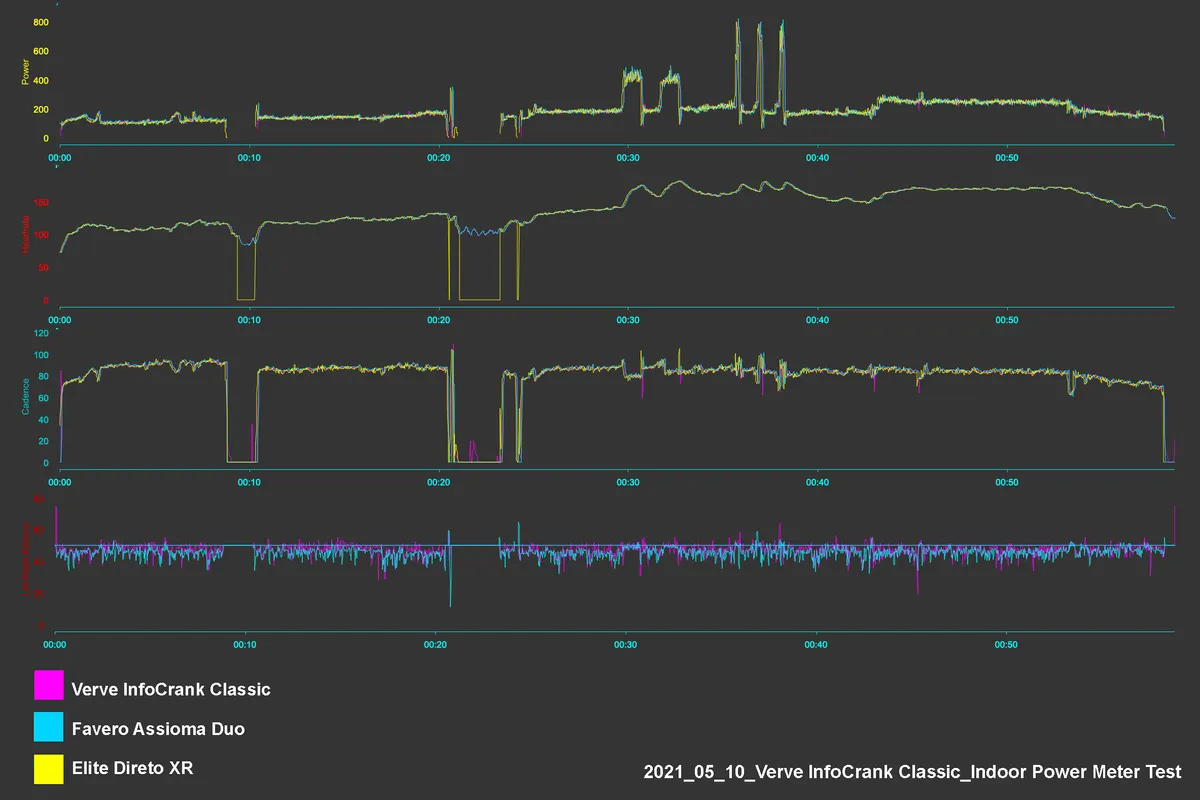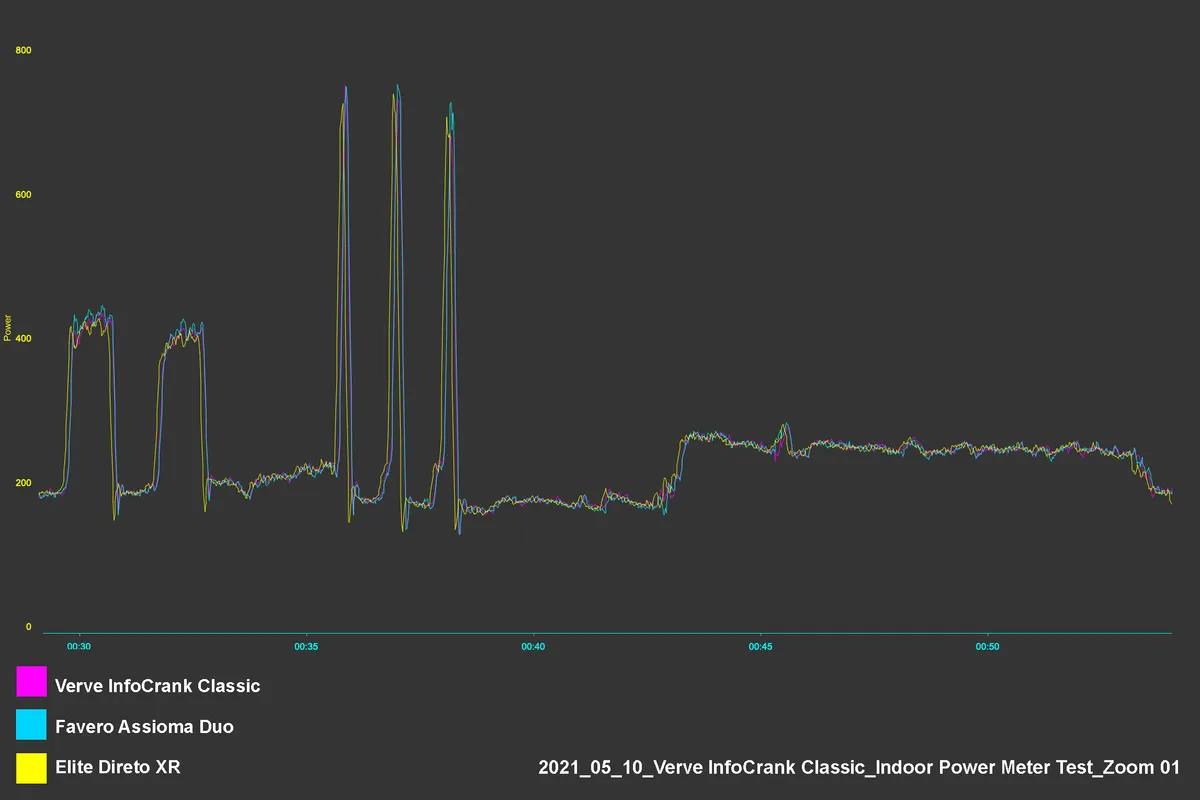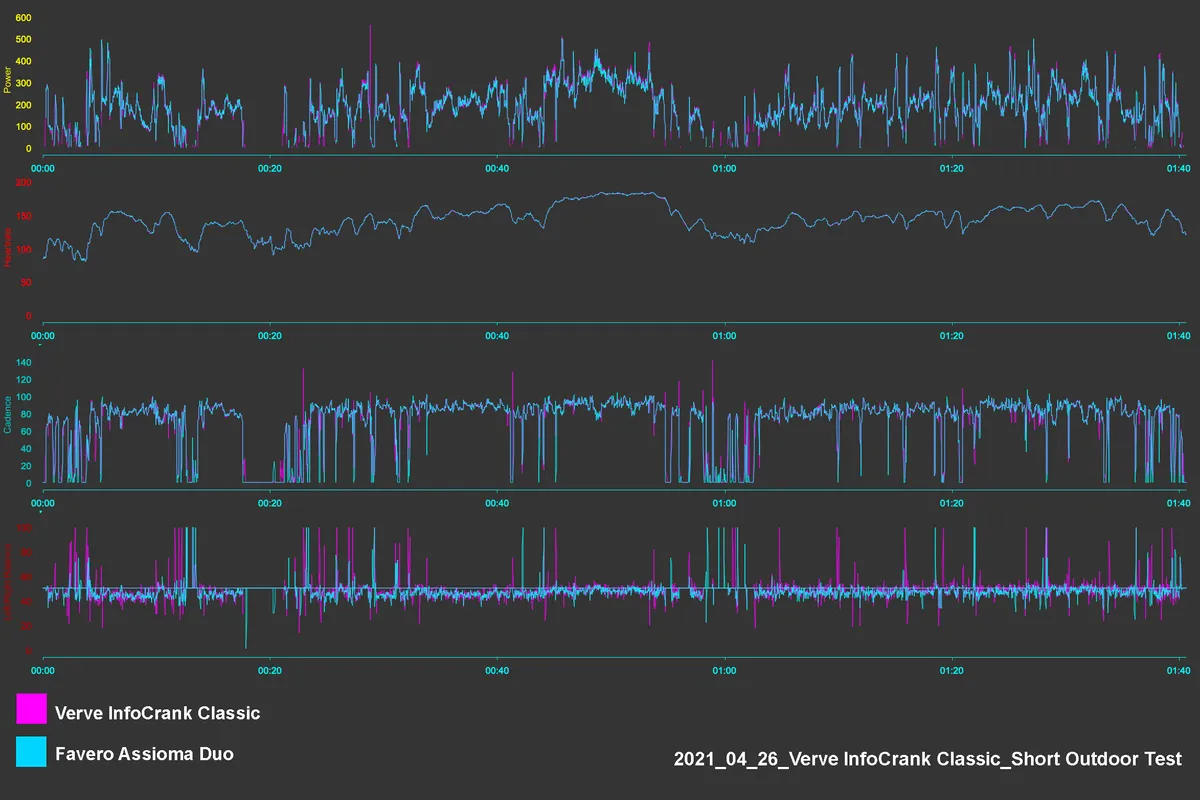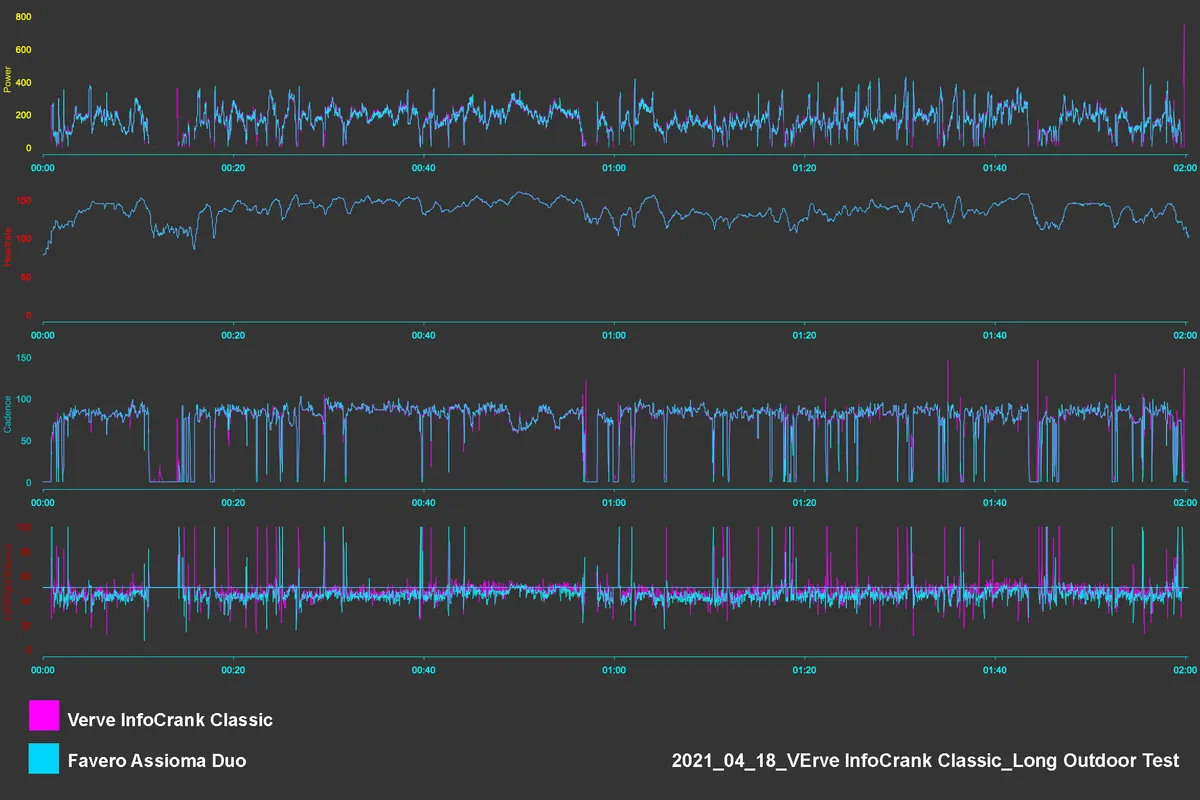The Verve InfoCrank is a dual-sided power meter based around an aluminium crankset of its own making.
Originally launched in 2014 as a challenger to SRM’s dominance, Verve continues to target the premium end of the market, with a simple claim: “the world’s most accurate power meter”.
While I can’t definitively say whether it is the “most accurate” power meter in the world, my time with the InfoCrank was almost entirely problem-free. My test unit delivered accurate and reliable data day after day, and generally just worked.
On top of this, with a sample rate of 256-hertz, the highest currently available on the market, data-hungry cyclists can potentially dig more deeply into their power output than with any other power meter.
Like other true dual-sided power meters, the Verve InfoCrank measures the effort produced by each leg independently and combines the data from each to determine total power output.
Verve InfoCrank Classic installation
Assembling the InfoCrank requires a chainring nut wrench and 5mm Allen key for fitting the chainrings, and a 2mm Allen key for removing and reinstalling the battery door.
The InfoCrank is generally built like a tank, with the small power meter pods sitting on the inside of the upper third on each crank arm. This means the power meter electronics are well protected from bumps and knocks.
The 2mm Allen key bolt on the battery door strikes me as the sole weak point. If you don’t have a sharp Allen key, this may be prone to rounding out with long-term use. The battery doors are available as a spare part for £35 should you have any issues, though.
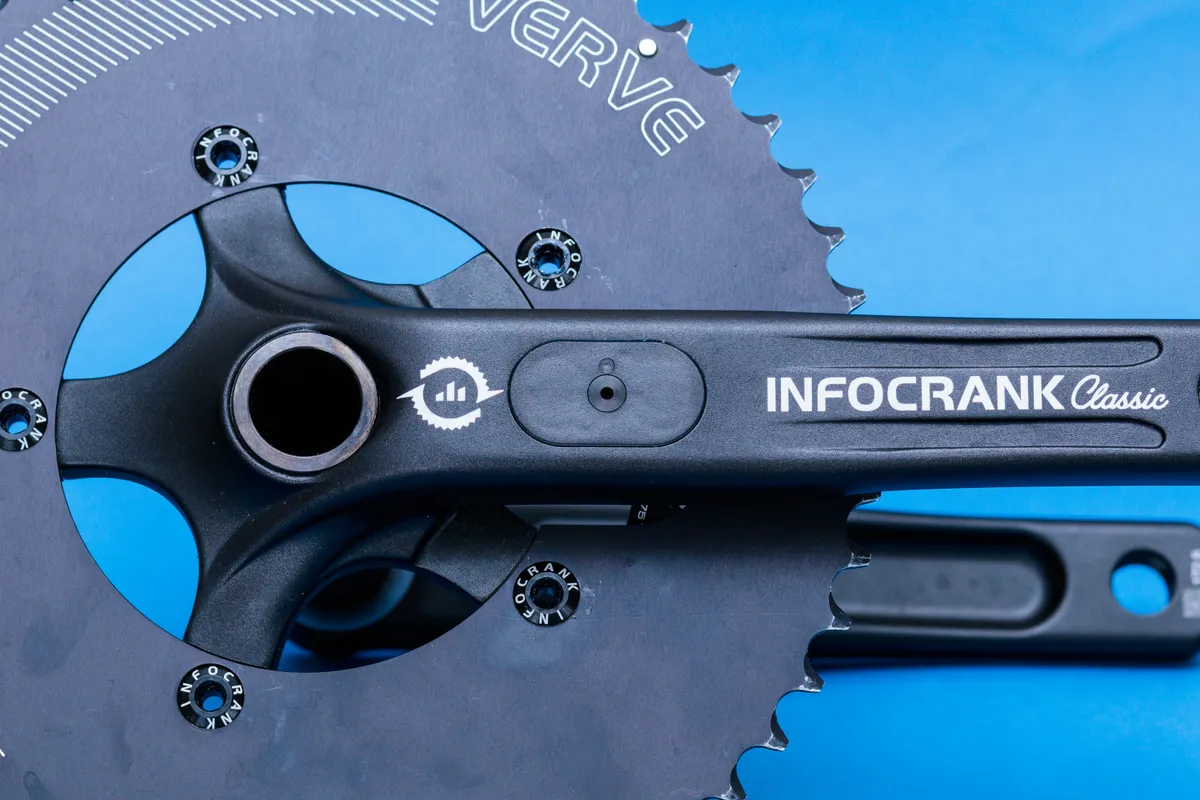
Verve specifically recommends using SR44 silver oxide batteries. You’ll need four in total (two per crank arm), for a claimed battery life of 500 hours. Based on my experience using Renata SR44 batteries, this doesn’t seem unrealistic.
LR44 alkaline batteries will work in a pinch, but my testing confirms these will only last a few days before running flat.
With its 24mm steel spindle, the Verve InfoCrank installs easily in standard Shimano bottom brackets. Verve recommends tightening the left crank to a torque of 45Nm, so you’ll need a torque wrench with an 8mm Allen bit to install the crank.
Verve also provides a wave washer and a few plastic spacers to take up any excess slack. The exact combination of washer and spacers you’ll need depends on the precise width of the bottom bracket on your bike, so will likely be different on every bike. I needed just a single 2mm spacer on the non-driveside on a 2021 Giant TCR Advanced Pro 2 Disc test bike.
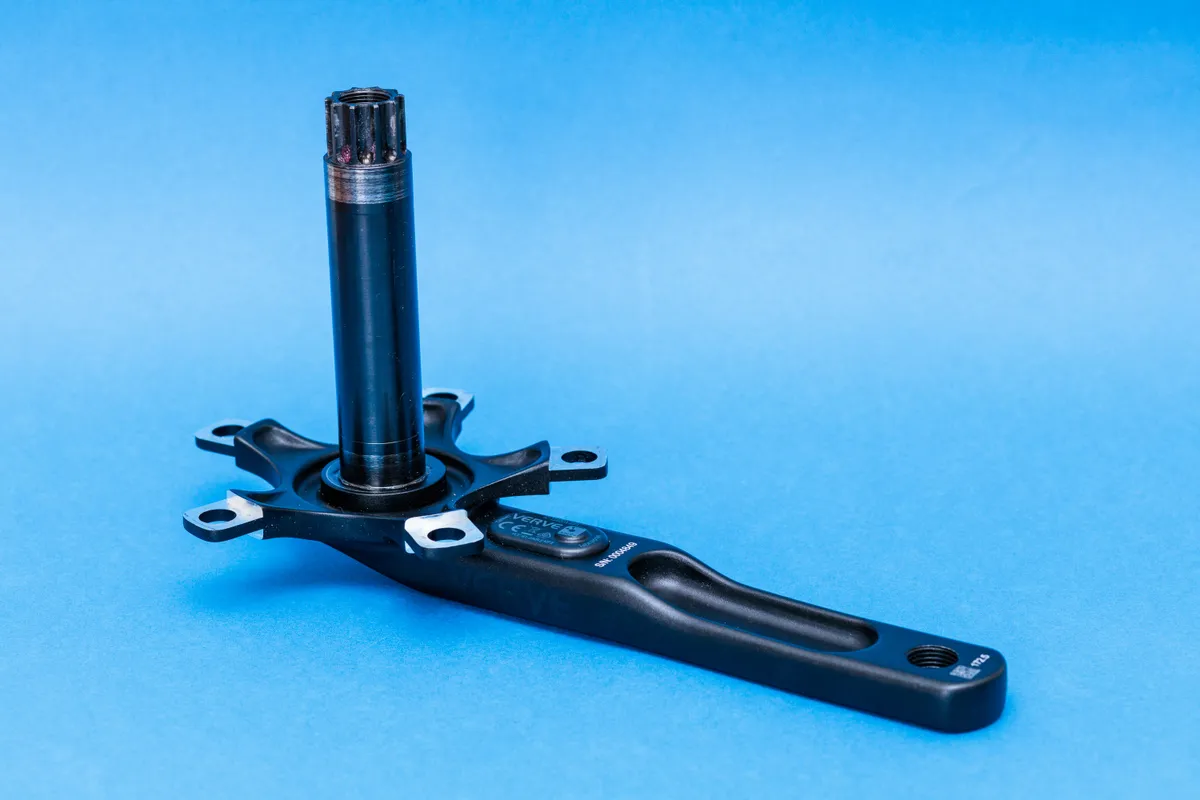
All things considered, providing your bike has a compatible bottom bracket, it’s a very simple installation process.
Available with either a 24mm steel or 30mm alloy spindle, and in five-bolt 110 or five-bolt 130 BCD (bolt circle diameter) configurations, there are options to fit most bikes and drivetrains, with the notable exception being SRAM AXS drivetrains.
As with other crank-based power meters you are tied into a set crank length and chainring bolt circle diameter (BCD). The smallest chainring available for the InfoCrank’s 110 BCD is typically a 34-tooth, or 39-tooth if you choose the 130 BCD option.
Verve InfoCrank Classic usage notes
Cadence can be determined with or without magnets installed on your frame. Verve says using magnets can offer improved battery life and more accurate data at very high or low cadences, or over rough terrain. In practice, though, both the battery life and magnetless data left no cause for concern.
The placement of the driveside pod may cause incompatibility with some aero chainrings, but Verve now produces its own (made by TA Spécialités, a French chainring specialist) to get around this. These aero chainrings also vastly improve the look of the InfoCrank compared to using standard chainrings.
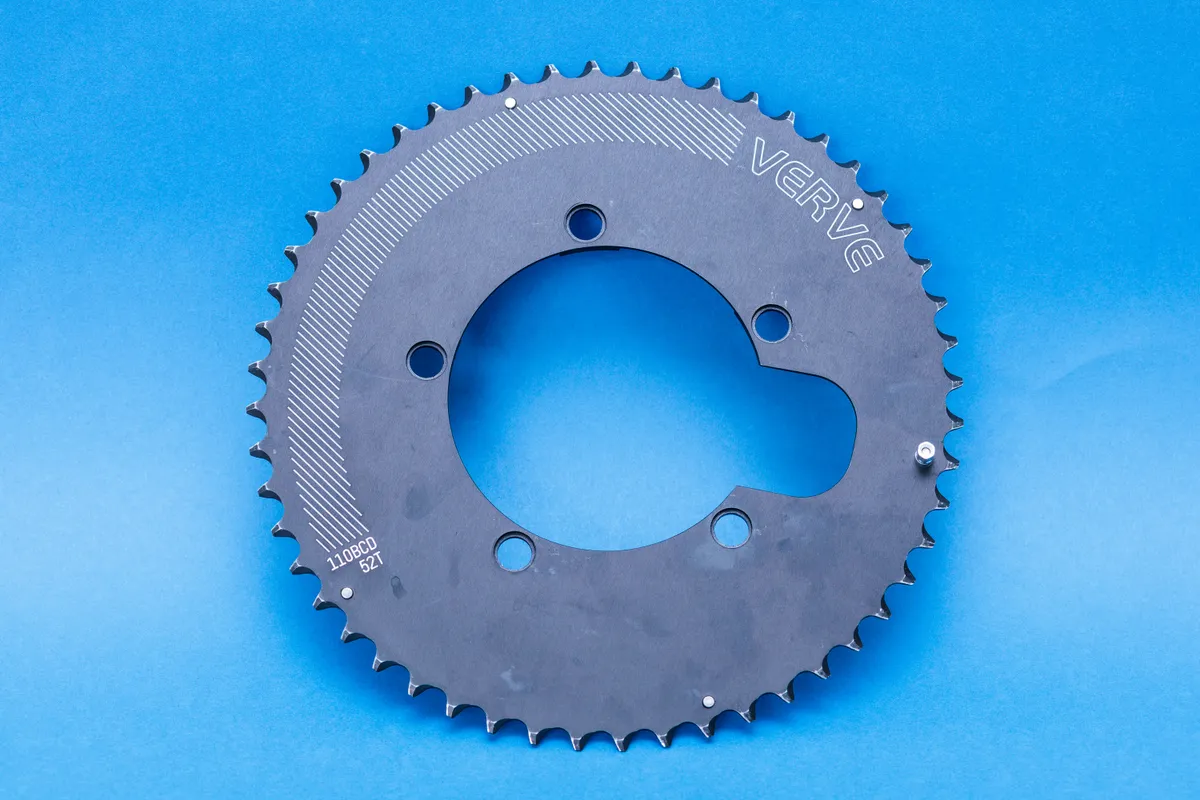
The added stiffness of the TA Spécialités aero chainrings also helps improve front shifting quality, though it nevertheless doesn’t quite match up to the lofty standards of genuine Shimano chainrings.
The taller, less profiled chainring teeth also make for a noticeably noisier drivetrain than when using Shimano chainrings.
Of course, if these things trouble you, you can use any five-bolt 110 BCD chainrings with the InfoCrank, including older Shimano ones – you don’t have to stick with the TA chainrings.
The InfoCrank is also relatively heavy, at 909g (with the Verve aero chainrings – the crankset on its own weighs 700g). For comparison, a Stages Power LR Shimano Ultegra R8000 crankset with matching chainrings weighs around 200g less. I don’t feel this small weight increase impacts performance, though, and lighter chainring sets are available if this bothers you.
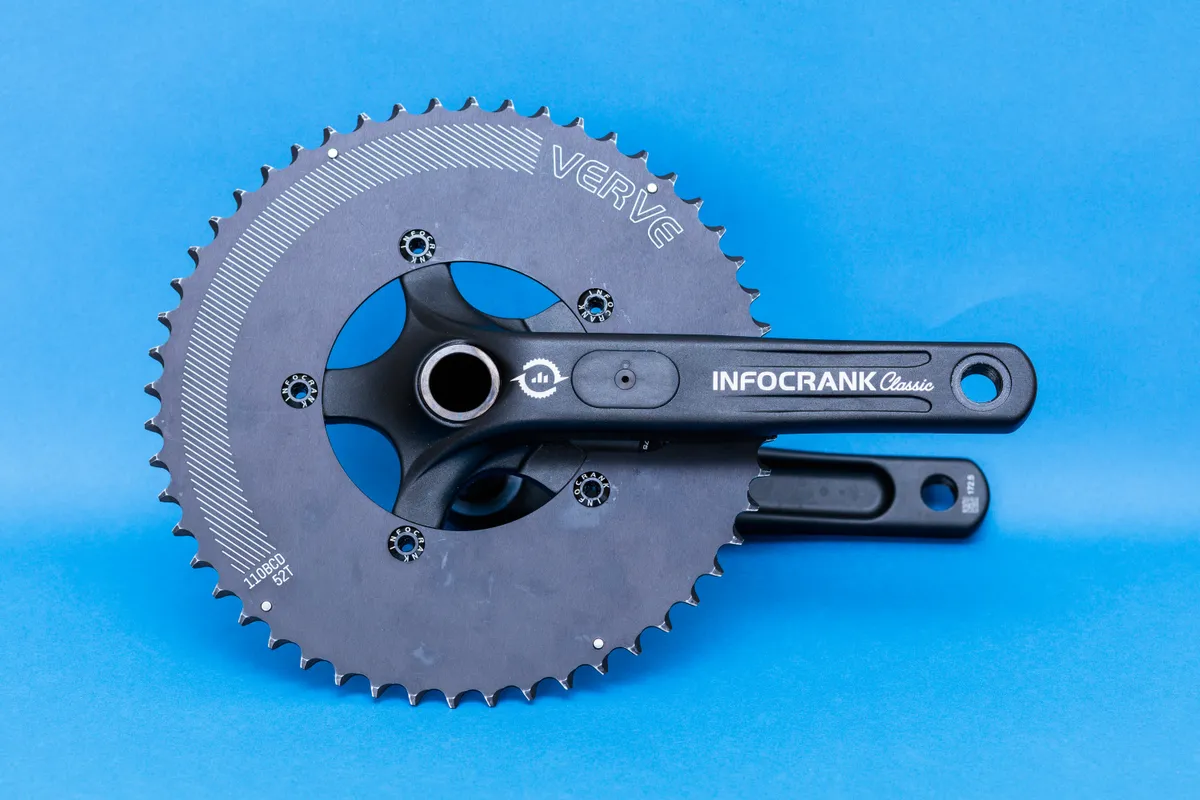
Connecting the unit to a Garmin Edge bike computer is easy and reliable, and I didn’t experience any data dropouts during testing.
Without cadence magnets in place, waking the InfoCrank requires putting a small amount of torque on both cranks, rather than spinning them as you would with most other power meters. This can be done by hand or simply by pedalling.
There’s no Bluetooth or smartphone companion app, so to update the firmware you’ll need to download Verve’s software to a laptop or desktop computer with an ANT+ dongle.
Likewise, if you want to use the InfoCrank to power your Zwift avatar, or with other indoor cycling apps, you’ll need to use an ANT+ compatible device.
This rules out compatibility with devices that only support Bluetooth, such as Apple TV. Likewise, for an iPad or iPhone, you’ll need a Wahoo 30-pin ANT+ key and an Apple 30-pin to Lightning adaptor.
Should you run into any issues during usage, Verve offers a two-year warranty from the date of purchase, which is about average for the power meter market, as things currently stand.
Verve InfoCrank Classic data accuracy
Verve’s headline claim for the InfoCrank is that it’s “the most accurate power meter in the world”. While the majority of manufacturers claim their power meters are accurate to +/- 1 or 2 per cent, Verve simply claims that the Infocrank is “accurate” and that this has been independently verified by scientific studies.
Additionally, rather than having a temperature compensation algorithm, Verve says the design of the cranks means the InfoCrank is immune from drift due to the effects of temperature on the strain gauges.
This negates the need to zero offset the power meter on a regular basis and Verve actively advises against doing so, other than after swapping the batteries or installing the crankset on a bike.
In my testing, all of this rang true. The InfoCrank delivered data that consistently aligned well with other benchmark power meters throughout testing, with seemingly instantaneous pick-up speed and – as advertised – no need to perform regular zero-offsets. It’s a very fuss-free power meter.
As mentioned previously, the InfoCrank samples at a rate of 256-hertz, which means that each crank measures torque 256 times per rotation if you’re pedalling at a cadence of 60 rpm, in order to determine power output (power = torque × cadence). This is one of, if not the, highest sample rates on the power meter market.
For those who want to take a deep dive into the mechanics of their pedal stroke and power output, this may be a valuable feature. The majority of cyclists, using standard head units like a Garmin Edge bike computer, however, will be constrained to recording data at 4-hertz (the standard for ANT+ devices).
Verve says the Infocrank nevertheless samples torque at 256-hertz, but the data is averaged into data packets that are sent to the head unit at 4-hertz.
Those wishing to unlock the raw high sample rate data will need to use Verve’s High Speed Data Logger, which, when paired with Verve’s VINC Pro software, can be used to capture and analyse the data.
Though it’s fair to say this kind of thing is almost exclusively applicable to professional riders and coaches and won’t be something most amateur cyclists will have the expertise to utilise.
Verve InfoCrank Classic conclusion
The Verve InfoCrank isn’t cheap, is relatively heavy and lacks modern quality-of-life features such as Bluetooth support and a companion phone app.
Nevertheless, it’s one of the best power meters for delivering on the basics: accurate and reliable power measurement, robust build quality, excellent battery life and a hassle-free installation process.
I didn’t find any quirks or unusual situations where the InfoCrank fell short, and so it scores very highly on the ‘it just works’ scale.
The more advanced features might not be something the majority of power meter users are likely to make regular use of, but it’s never a bad thing to have the extra capabilities.
Though needing to zero-offset a power meter regularly isn’t an arduous task, that the InfoCrank can seemingly be relied upon to produce accurate data all of the time, regardless of zero-offsets, temperature swings, installation torque, etc, means you can trust that changes in your data are genuine changes in your power output, not just noise.
The InfoCrank feels like a proper tool and has quickly become one of the benchmarks against which I measure other power meters.
How we tested
I put seven of the latest power meters head-to-head to find out which is worth your hard-earned cash.
As well as testing the accuracy and reliability of the data on each unit, consideration was given to ease of installation, indoor versus outdoor use, firmware, power calculations, drivetrain compatibility, warranties, compatibility with external units such as bicycle computers, and any other additional features.
Each power meter was tested indoors on a smart trainer and outdoors in all weathers. To assess accuracy, captured power data was compared against data from trusted benchmark power meters recording simultaneously across multiple bicycle computers.
Also on test
Product
| Brand | Verve |
| Price | €1471.02, £1281.84, $1778.76 |
| Weight | 909g |

